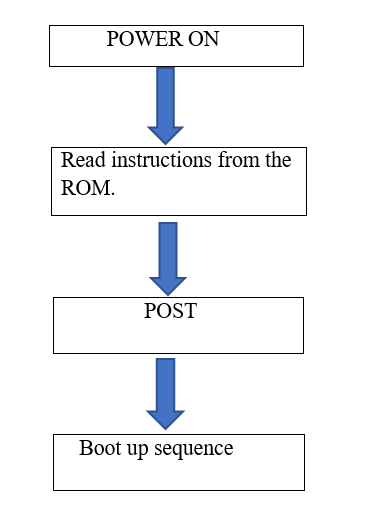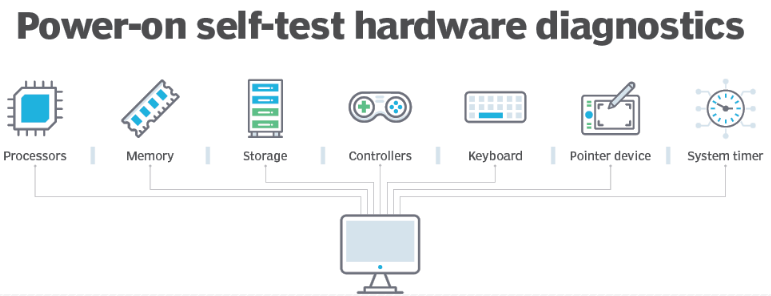What is Post?
POST can be used to describe any of the following:
The POST, an abbreviation for power-on self-test, is a test the computer must pass to ensure that all hardware is functional before continuing the rest of the boot process. The computer's hardware, such as the RAM (random access memory), hard drive, CD-ROM drive, keyboard, etc., are all tested during the POST process.
If all hardware passes the POST test, the computer will proceed to start up and perhaps generate a single beep sound. The machine won't start up if POST is failed since it emits a beep signal to signify the issue detected. Hardware problems with a specific computer component cause all POST faults.

In the post, all the testing sequences run here.
Why is it required to POST?
A computer might have various issues if a POST was skipped, which verifies that all necessary hardware is operational. For instance, you might need to be made aware that the RAM was the cause of any software issues if the machine had RAM issues. Your computer will perform more steadily if the relevant hardware has been tested and found functional.
A post is a communication that a person publishes online, such as text or photographs, on a message board, in a comment area, or on a social network. The verb "to post" denotes publishing a message. For instance, "You may publish this message by clicking here," or "Many forum users post often."
You may publish a note on your Facebook profile to share your holiday experiences with your loved ones. To let people know what you are doing, you may also submit a status update.
The significance of Power-On Self-Tests
Power-On Self-Tests are an essential part of system troubleshooting since the boot-up can only continue if the program is working correctly, and the BIOS provides an error message if the software isn't. This is significant because when computers power up, several crucial programs are loaded.
When a POST is successfully finished, bootstrapping, which begins the boot startup, up's is enabled. An OS is often booted or loaded into a computer using a much smaller starting software, referred to as bootstrapping in the computing world.
Posts are used by a variety of devices, not just computers. After being turned on, certain devices, including medical apparatus and other hardware, do similar self-tests.

How to use Power-On Self-Tests?
The firmware installed and the hardware architecture of the system determine how a computer performs the POST procedure. The procedure generally ensures that all the hardware required to ensure the OS and apps can function properly is viable. Typically, this contains the following equipment:
Keyboard, pointer, memory, storage, controllers, processors, and a system timer.
The system will determine the precise list of hardware components. Additional operations that might be carried out during a POST process include firmware validation, hardware configuration validation, and hardware initialization.
A user could notice some evidence that the POST procedure is active while it is happening. For instance, hardware lights may flash, or a corporate logo may appear on the screen.
But unless there's an issue, modern computers are so quick that they often complete their POST processes with little to no warning. The remainder of the boot procedure is carried out by the computer if the required hardware is found and functioning correctly.
The firmware often interrupts the boot process and outputs an error message if the requested hardware isn't identified or running correctly. Depending on the issue, the warning may be conveyed as a sequence of coded beeps, a visual display on the computer's screen, or both. Because the POST procedure takes place before the graphics card of the computer is initialized, it's conceivable that error messages cannot be displayed on the screen, in which case the machine just beeps.
The system architecture, installed firmware, and vendor preferences affect the beeping pattern. The pattern is often intended to represent the kind of error, or at the very least, to give a basic idea of where to seek the fault. For instance, if there is a problem with the keyboard card, the system may produce three long beeps, or one long and two short sounds, if the issue is with the display adapter.
The boot process will stop if a fatal error is discovered during the POST procedure. This is because the hardware that is being examined is necessary for the operation of the computer. Other kinds of electrical equipment may do POST operations upon startup for the same purpose.
Conclusion
Power On Self Test is referred to as POST. It consists of a number of tests carried out as part of the BIOS initialization procedure. The system will start up if all of the tests are successful. But if certain tests fail, the boot process will stop. A motherboard often has at least one way to alert the user when POST attempts fail, enabling problem-solving.